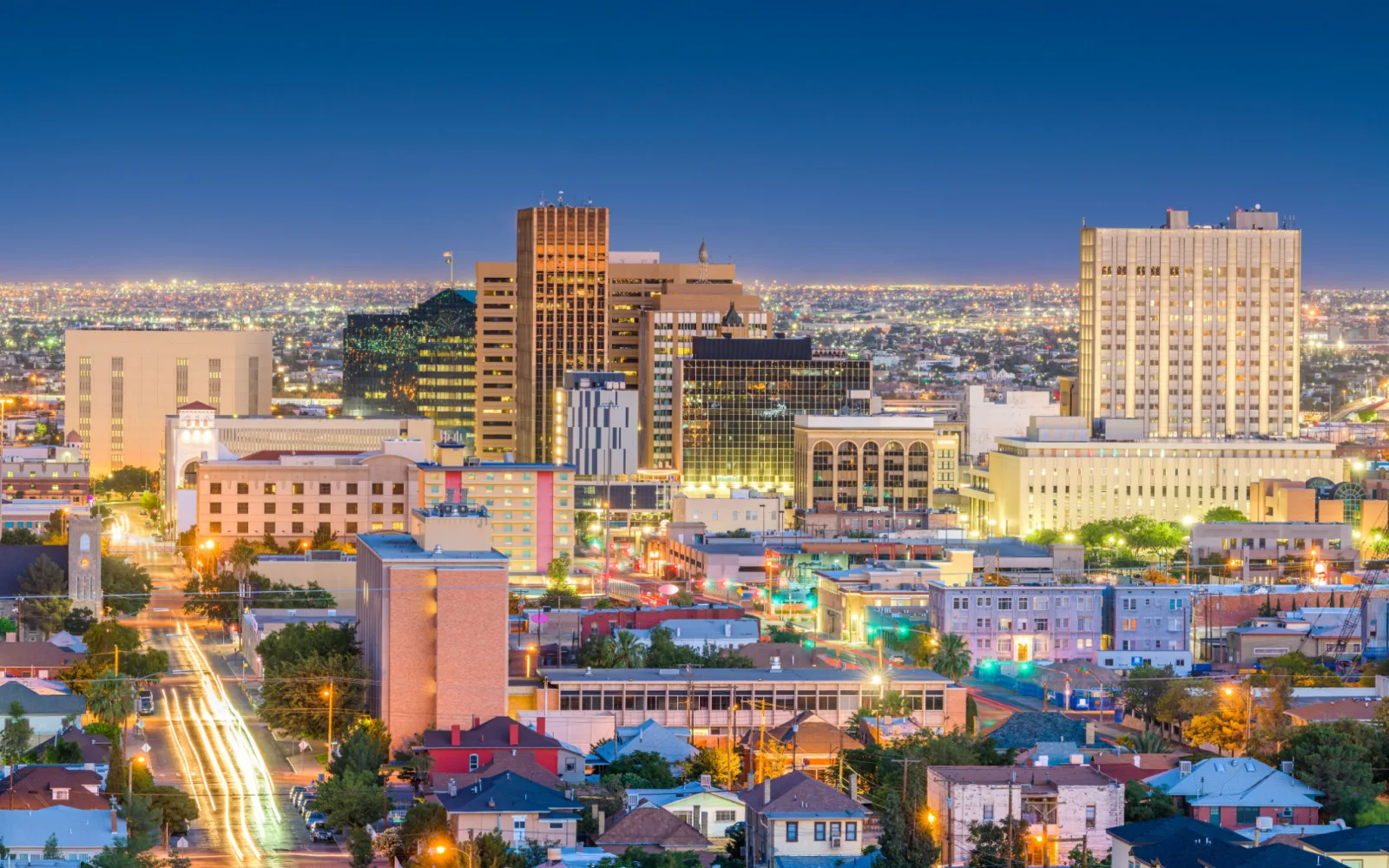Is El Paso safe to visit in 2024?
El Paso’s safety is generally reassuring, boasting one of the lowest crime rates among major U.S. cities. While some areas require caution, it’s a safe destination for tourists. Visitors can confidently explore this Texan city, but stay prepared for the desert heat.
The city of El Paso in Texas is popular with visitors to the Lone Star State who want to get a glimpse of authentic Texas. Every year, over two million people visit the city, some for business conferences and others for sightseeing.
El Paso’s historic ties to the Wild West as well as its distinct Mexican culture (the city is located right on the border) make it a unique destination within the United States.
You can visit beautiful historic buildings such as the Plaza Theater and the Hotel Paso del Norte, or explore the Mission Trail for a glimpse into El Paso’s multicultural history. Modern El Paso is a vibrant city with a great arts scene, which you can explore in Las Plazas Arts District, and great Mexican food.
But while some consider this to be a hidden gem, others think the city is dangerous. So, is El Paso safe to visit? Here’s our take.
Is El Paso Safe to Visit in 2024?

El Paso, Texas, USA – March 8, 2023: An El Paso Street Car arrives at the City Hall Stop in the downtown area/Bill Chizek/Shutterstock
Yes. El Paso is generally safe to visit. The city has one of the lowest crime rates in the nation when compared to major cities around the United States.
While dangerous incidents can still happen and there are some parts of the city that you should avoid for your own safety, the average tourists encounters no problems throughout their visit.
Ready to Book?
Unlock Exclusive Discounts on Expedia.com!
Got Travel Insurance?
Protect yourself for unexpected interruptions.
Compare Plans We may be compensated when you book after clicking on one of our links.El Paso is a border city, located right across the border from Ciudad Juarez. This location leads many people to think that El Paso is dangerous. Politicians, including Donald Trump, have cited El Paso as an example of a city that is dangerous or used to be dangerous due to its proximity to the border.
However, El Paso has been very safe for the past 30 years. According to reporting by The Washington Post, El Paso had the third-lowest crime rate among major cities in the United States in 2005, 2006, and 2007 and has continued that safety trend towards the present day.
Like any other big city, El Paso has problems, including crime. Common crimes in El Paso include:
- Theft
- Robbery
- Assault
- Drug-related offenses
However, the rate of different crimes is low in El Paso. The violent crime rate in particular is low. Visitors are rarely affected by crime, especially not visitors who take common-sense precautions to protect themselves.
Many people in the United States associate El Paso with a horrible recent tragedy, the mass shooting in a Walmart in 2019 that killed 23 people. The shooter was convicted to life in prison for his racially motivated attack, which intentionally targeted the city’s large Hispanic community.
Unfortunately, mass shootings are not unique to El Paso. The Canadian government even mentions the risk of mass shootings in the United States in its travel advisory for citizens looking to visit the neighboring country.
Anywhere you go in the United States, there is a risk of being in the wrong place at the wrong time. Mass shootings are no more likely in El Paso than in many other parts of the nation.
Just make sure that you stay alert in crowded areas and follow any police alerts to potential dangerous situations. El Paso is also at a risk of natural disasters.
The University of Texas at El Paso, on its safety page for students, lists likely threats, including:
- Severe thunderstorms
- Flash flooding
- Tornadoes
Although there is some risk of tornadoes in El Paso, the city is not formally located in Tornado Alley and hasn’t been devastated by tornadoes recently. Just make sure that you check the weather while planning your trip, bring appropriate clothing, and take shelter if there is a severe weather alert.
Crime in El Paso
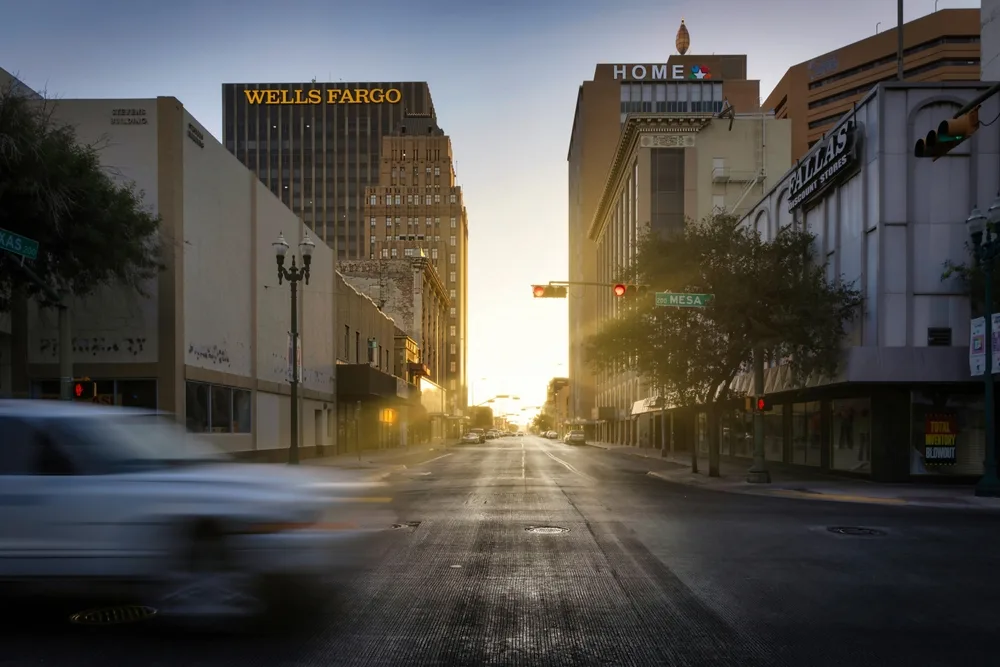
El Paso, Texas, USA – June 15, 2022: The sun comes up at the intersection of Texas Avenue and Mesa Street, surrounded by the closed shops the downtown area/Bill Chizek/Shutterstock
Crime is one of the primary concerns for people visiting El Paso. Big cities tend to have higher crime rates and El Paso is a city of over 600,000 people. The good news is that El Paso has a below-average crime rate, both for the national average and when compared to cities of its size.
It has a very low violent crime rate of 313.4 incidents per 100,000 people, and 3.2 homicides per 100,000 people, which is one of the lowest rates for cities above 500,000 people in the United States.
According to FBI data, property crimes make up the vast majority of crimes committed in El Paso, at 81% of the crime total. Theft is the most common category of crime overall, making up about 66% of total crimes committed in the city.
The most common violent crime is assault, which makes up about 13.5% of total crimes committed. The proximity of the border does somewhat affect crime in El Paso (the same way that any border around the world tends to encourage illegal behavior).
There are some drug trafficking offenses in the city, but crime rates overall are very low. The border also means that El Paso has many law enforcement agents present, which serves as a deterrent for potential crime.
The habitually low crime rate means that it often makes it onto the lists of most livable cities in the United States, such as U.S. News & World Report’s list of the best places to retire in the country. If it is safe enough to live, then it is safe enough to visit.
Theft
As with in most cities in the United States, the most common crime in El Paso is theft. Most thefts that occur in El Paso don’t really affect visitors, but businesses — for example, shoplifting is fairly common.
However, you can still encounter thefts of opportunity in El Paso, such as pickpocketing and vehicle break-ins. Thefts of this sort are fairly rare, and certainly not as common as in some other, bigger cities in the United States or European destinations.
Still, it’s always a good idea to keep some form of control over your valuables as you are out and about. Be especially careful in crowded areas that see a lot of foot traffic and tourists, such as the El Paso Zoo or the pedestrian borders.
Make sure that you never leave your bags or valuables, such as a wallet, unattended. Most crimes in El Paso are crimes of opportunity, which means that thieves just look for a quick opportunity to make money and take advantage of a split second of inattention.
If you never leave your valuables unattended, you won’t provide a potential thief with that window of opportunity. Another form of petty theft that you may encounter is theft from vehicles.
El Paso is a fairly car-centric city, which means that most people use vehicles to get around. That provides opportunity for thieves to target cars. If you decide to rent or drive your own car, make sure that you take precautions to protect your possessions in your vehicle.
Don’t leave possessions in view of someone passing by. Store all bags, including shopping bags, in the trunk and other items such as loose change in the glove compartment. Never leave your purse or wallet in your car unattended, even while you’re just pumping gas.
Assault
The most common violent crime in El Paso is assault. It makes up the vast majority of violent crimes committed in the city. Most assaults, like elsewhere in the country, are not committed by random.
Instead, they are usually escalations of disputes between people that at least have some passing acquaintance with each other. As a tourist or visitor, your risk of assault is very low.
Random attacks can happen, although they are rare, so take some precautions to avoid such a situation arising. One important step you can take is to avoid walking in dangerous neighborhoods, especially after dark.
Most crimes happen at night, so limit your nighttime movements to neighborhoods that you know are safe, and well-lit areas where there are plenty of people around. Some assaults happen as a result of drunken disputes.
Make sure that you manage your alcohol consumption while in El Paso so that your reflexes and instincts are still sharp, even as you enjoy yourself. If a situation feels as if it may escalate, get out of there.
Avoiding Bad Areas
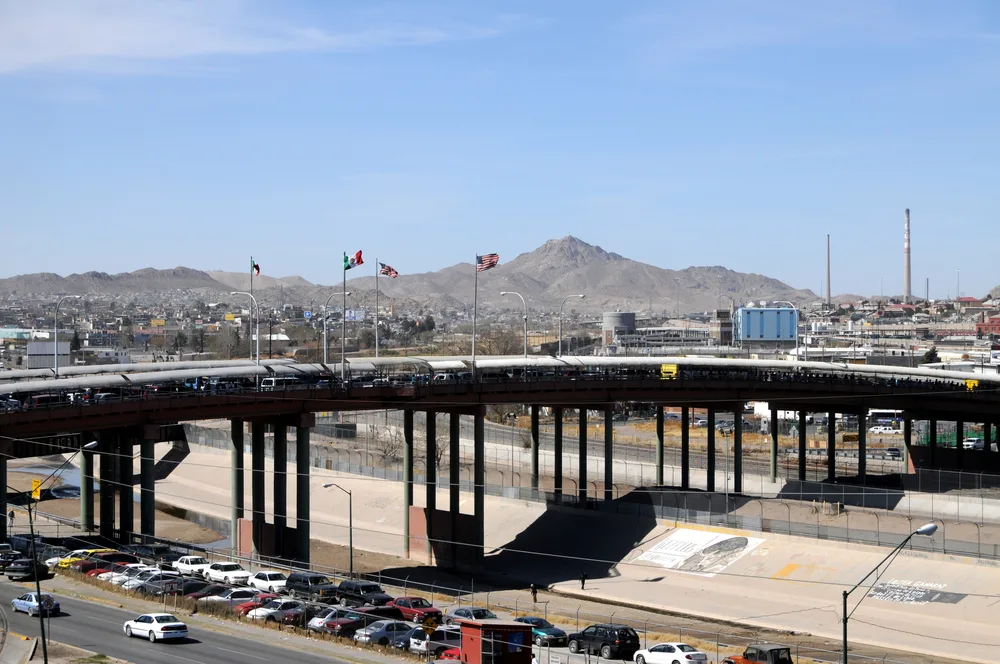
Frontpage/Shutterstock
As with any other place around the world, El Paso has some bad neighborhoods. Avoiding these areas greatly reduces your risk of something bad happening to you. Most of these neighborhoods are impoverished residential neighborhoods without much to see for a tourist anyway.
Residents say you should be careful in the following neighborhoods of El Paso:
- El Segundo Barrio
- Borderland
- Las Tierras
Generally, the East Side of El Paso tends to be poorer and have higher crime rates than the west. Central El Paso has many sights, but it also has an above-average crime rate compared to the rest of the city. It can get a bit sketchy, especially at night.
Things to Consider
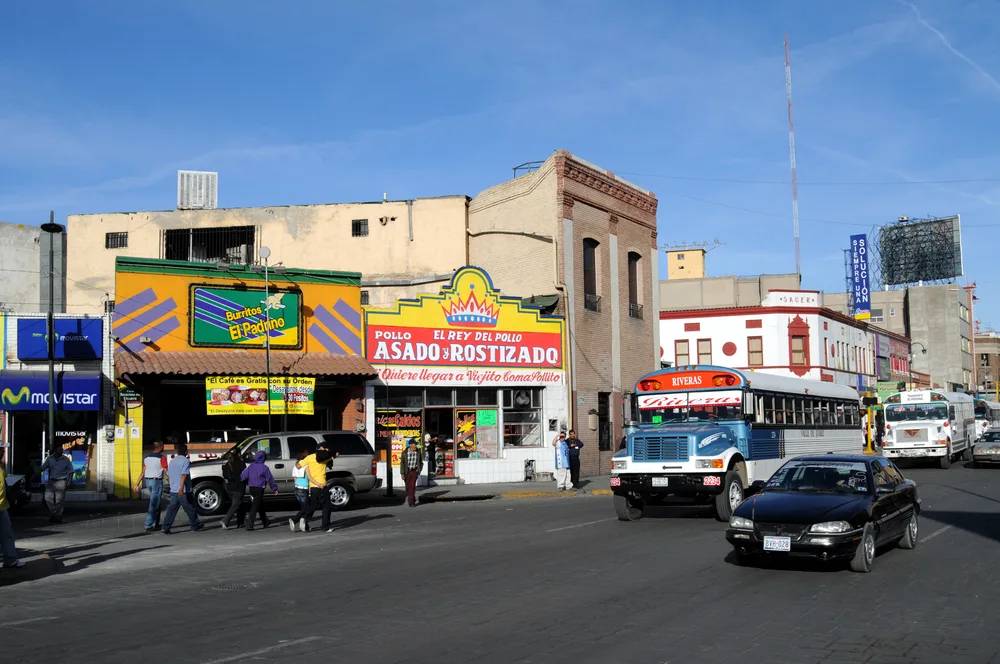
CIUDAD JUAREZ – FEB. 27: Busy intersection of Avenida 16 de Septiembre and 2da Calle Ugarte in downtown Ciudad Juarez, which has become the most violent city in Mexico, on Feb. 27, 2009/Frontpage/Shutterstock
Here are a few additional safety tips for visiting El Paso:
- Be careful when driving in El Paso. Cars are the preferred way of getting around the city, but Texans like to joke that locals are very poor drivers. If you decide to drive through El Paso, make sure that you exercise caution.
- Prepare for the heat. El Paso is located in the desert and it can get very hot, especially in the summer. There’s a reason why you won’t see that many people walking around! Stay indoors during the hottest part of the day. If you have to be outdoors, make sure that you hydrate regularly and apply sunscreen.
- Be careful when visiting Juarez. Juarez, just over the border with Mexico, is a popular day trip from El Paso. During the day, it’s safe enough to visit Juarez’s central business district, but the city does have a very high crime rate and it’s not recommended to wander around alone at night.
Frequently Asked Questions
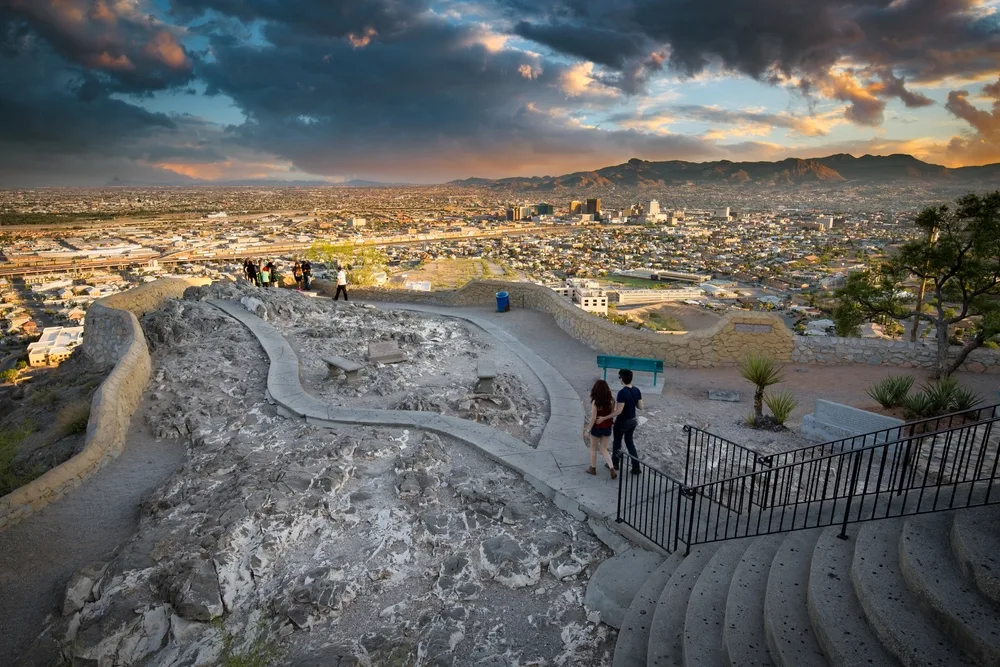
El Paso, Texas, USA – June 18, 2016: Visitors enter Murchison Rogers Park off of Scenic Drive, overlooking the border city/Bill Chizek/Shutterstock
Here are a few common questions that people want to ask before visiting El Paso:
Is it safe to walk across the border in El Paso?
It is possible to walk across the border in El Paso, and many residents of both El Paso and Juarez do so each day safely. However, the city of Juarez is not very safe and it’s not advisable to walk around some of its neighborhoods, especially at night.
Is El Paso a friendly city?
Yes, El Paso is a very friendly city. Many visitors are blown away by the hospitality they receive from locals. All the stereotypes about Texans being welcome are proven true in El Paso!
Is El Paso worth visiting?
If you are on a tight schedule when visiting Texas, some of the bigger cities have more attractions. However, El Paso makes a pleasant day trip, thanks to its unique cultural mix and pleasant, laid-back society.
Is there a nice part of El Paso?
Since El Paso is one of the safest cities in the United States, it has many nice parts that are worth visiting! Some of the nicest neighborhoods are upscale residential neighborhoods such as Castner Heights.
Is El Paso still the safest city in the US?
While El Paso is not still the safest city in the United States, every year, it ranks in either the top 10 or the top 15 safest big cities in the United States.
Should You Book a Trip to El Paso?
You really don’t have to worry about your safety at all when visiting El Paso as this city is one of the safest in the United States. It has a very low crime rate and dangerous incidents rarely affect visitors. Just be sure to prepare for that El Paso heat!



